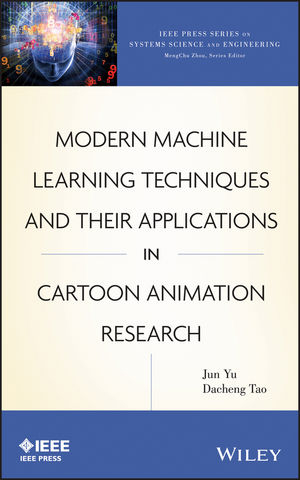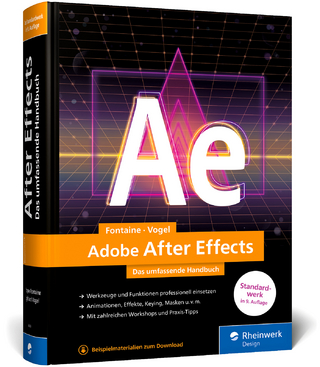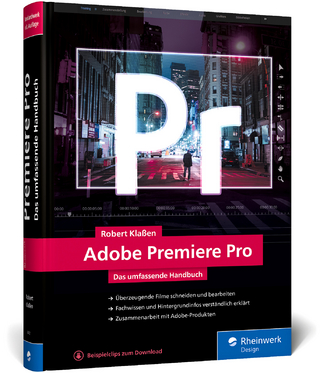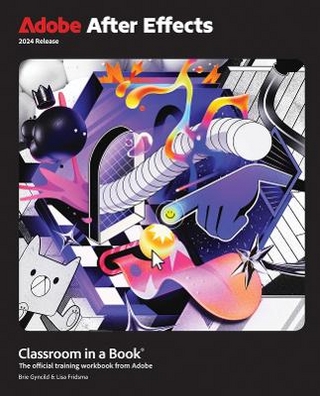
Modern Machine Learning Techniques and Their Applications in Cartoon Animation Research
Wiley-IEEE Press (Verlag)
978-1-118-11514-5 (ISBN)
- Titel z.Zt. nicht lieferbar
- Versandkostenfrei innerhalb Deutschlands
- Auch auf Rechnung
- Verfügbarkeit in der Filiale vor Ort prüfen
- Artikel merken
JUN YU, PhD, is an Associate Professor in the Computer Science Department, School of Information Science and Engineering, Xiamen University, Xiamen, China. His current research interests include computer graphics, computer visions, and machine learning. He has authored or coauthored more than thirty scientific articles in journals including IEEE T-IP, IEEE TSMC-B, and Pattern Recognition. DACHENG TAO, PhD, is Professor of Computer Science with the Centre for Quantum Computation & Intelligent Systems and the Faculty of Engineering & Information Technology, University of Technology, Sydney, Australia. His research applies statistics and mathematics to data analysis problems in computer vision, data mining, machine learning, multimedia, and video surveillance. He has authored more than 100 scientific articles.
Preface xi
1 Introduction 1
1.1 Perception 2
1.2 Overview of Machine Learning Techniques 2
1.2.1 Manifold Learning 3
1.2.2 Semi-supervised Learning 5
1.2.3 Multiview Learning 8
1.2.4 Learning-based Optimization 9
1.3 Recent Developments in Computer Animation 11
1.3.1 Example-Based Motion Reuse 11
1.3.2 Physically Based Computer Animation 26
1.3.3 Computer-Assisted Cartoon Animation 33
1.3.4 Crowd Animation 42
1.3.5 Facial Animation 51
1.4 Chapter Summary 60
2 Modern Machine Learning Techniques 63
2.1 A Unified Framework for Manifold Learning 65
2.1.1 Framework Introduction 65
2.1.2 Various Manifold Learning Algorithm Unifying 67
2.1.3 Discriminative Locality Alignment 69
2.1.4 Discussions 71
2.2 Spectral Clustering and Graph Cut 71
2.2.1 Spectral Clustering 72
2.2.2 Graph Cut Approximation 76
2.3 Ensemble Manifold Learning 81
2.3.1 Motivation for EMR 81
2.3.2 Overview of EMR 81
2.3.3 Applications of EMR 84
2.4 Multiple Kernel Learning 86
2.4.1 A Unified Mulitple Kernel Learning Framework 87
2.4.2 SVM with Multiple Unweighted-Sum Kernels 89
2.4.3 QCQP Multiple Kernel Learning 89
2.5 Multiview Subspace Learning 90
2.5.1 Approach Overview 90
2.5.2 Techinique Details 90
2.5.3 Alternative Optimization Used in PA-MSL 93
2.6 Multiview Distance Metric Learning 94
2.6.1 Motivation for MDML 94
2.6.2 Graph-Based Semi-supervised Learning 95
2.6.3 Overview of MDML 95
2.7 Multi-task Learning 98
2.7.1 Introduction of Structural Learning 99
2.7.2 Hypothesis Space Selection 100
2.7.3 Algorithm for Multi-task Learning 101
2.7.4 Solution by Alternative Optimization 102
2.8 Chapter Summary 103
3 Animation Research: A Brief Introduction 105
3.1 Traditional Animation Production 107
3.1.1 History of Traditional Animation Production 107
3.1.2 Procedures of Animation Production 108
3.1.3 Relationship Between Traditional Animation and Computer Animation 109
3.2 Computer-Assisted Systems 110
3.2.1 Computer Animation Techniques 111
3.3 Cartoon Reuse Systems for Animation Synthesis 117
3.3.1 Cartoon Texture for Animation Synthesis 118
3.3.2 Cartoon Motion Reuse 120
3.3.3 Motion Capture Data Reuse in Cartoon Characters 122
3.4 Graphical Materials Reuse: More Examples 124
3.4.1 Video Clips Reuse 124
3.4.2 Motion Captured Data Reuse by Motion Texture 126
3.4.3 Motion Capture Data Reuse by Motion Graph 127
3.5 Chapter Summary 129
4 Animation Research: Modern Techniques 131
4.1 Automatic Cartoon Generation with Correspondence Construction 131
4.1.1 Related Work in Correspondence Construction 132
4.1.2 Introduction of the Semi-supervised Correspondence Construction 133
4.1.3 Stroke Correspondence Construction via Stroke Reconstruction Algorithm 138
4.1.4 Simulation Results 141
4.2 Cartoon Characters Represented by Multiple Features 146
4.2.1 Cartoon Character Extraction 147
4.2.2 Color Histogram 148
4.2.3 Hausdorff Edge Feature 148
4.2.4 Motion Feature 150
4.2.5 Skeleton Feature 151
4.2.6 Complementary Characteristics of Multiview Features 153
4.3 Graph-based Cartoon Clips Synthesis 154
4.3.1 Graph Model Construction 155
4.3.2 Distance Calculation 155
4.3.3 Simulation Results 156
4.4 Retrieval-based Cartoon Clips Synthesis 161
4.4.1 Constrained Spreading Activation Network 162
4.4.2 Semi-supervised Multiview Subspace Learning 165
4.4.3 Simulation Results 168
4.5 Chapter Summary 173
References 174
Index 195
| Reihe/Serie | IEEE Press Series on Systems Science and Engineering |
|---|---|
| Sprache | englisch |
| Maße | 163 x 244 mm |
| Gewicht | 454 g |
| Themenwelt | Informatik ► Grafik / Design ► Film- / Video-Bearbeitung |
| Informatik ► Office Programme ► Outlook | |
| Informatik ► Theorie / Studium ► Künstliche Intelligenz / Robotik | |
| Technik ► Elektrotechnik / Energietechnik | |
| ISBN-10 | 1-118-11514-7 / 1118115147 |
| ISBN-13 | 978-1-118-11514-5 / 9781118115145 |
| Zustand | Neuware |
| Haben Sie eine Frage zum Produkt? |
aus dem Bereich


